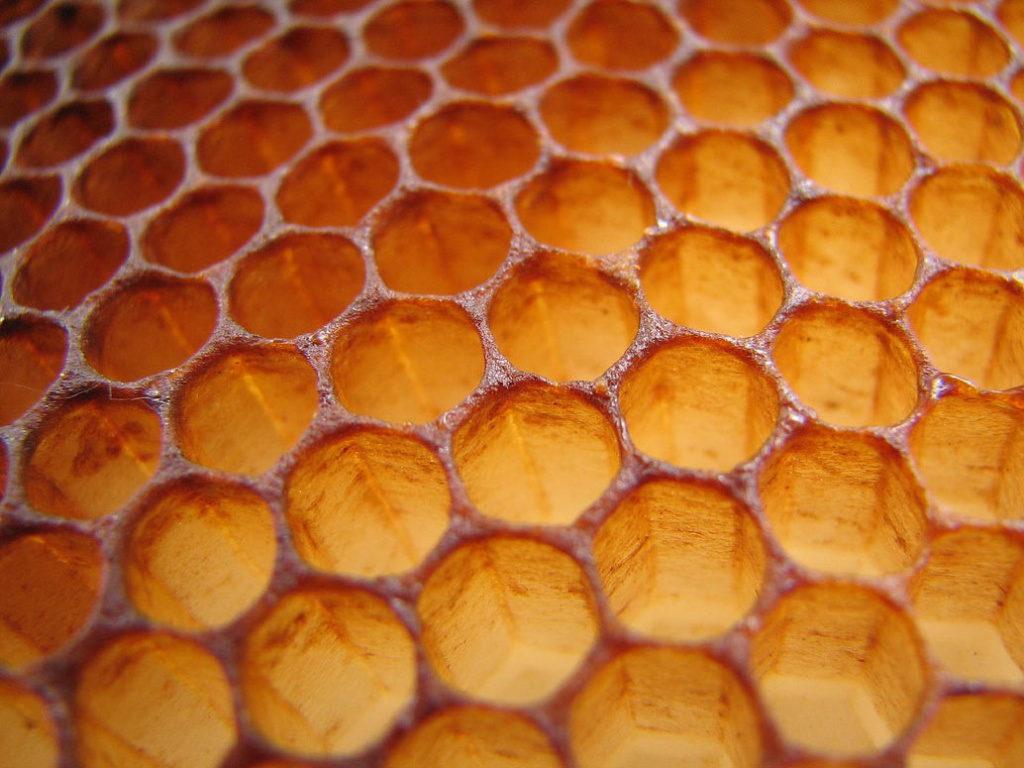Grade Level: 2
Content area: Math, Science
Standard identifiers: 2.G.1; 2-PS1-3
Objectives: Students will:
- Observe how an object of a small set of pieces can be reassembled into a different object
- Reason with shapes and their attributes
- Use shapes to make a honeycomb that most efficiently uses space
Materials and Resources:
- Make Your Own Honeycomb Printouts
- Example Honeycomb
- How Bees Make Hives from NOVA Bees: Tales From The Hive
- You will also need:
- Glue
- Scissors
- Half-sheets of paper (colored construction paper would help to illustrate the use of space nicely)
Assessment (informal):
- Students experiment with different shapes to make a two-dimensional honeycomb that most efficiently uses space.
Strategies for English Language Learners and Learners with Special Needs:
- Simplify the lesson by only including the hexagons or hexagons and circles
- Show an example of the goal/completed comb
- Introduce the words: honeycomb, hexagon, circle, and octagon
Instructional Sequence:
Introduction and explanation to students about the purpose of the lesson (5 minutes)
- Tell the students that they will be making their own honeycomb. How do bees make their honeycombs? Show the video: How Bees Make Hives from NOVA Bees: Tales From The Hive from 20:00 to 24:10
- While watching the video, have students observe the shapes the bees are making from the wax to form the combs. What do they see? What does the narrator say? Do they think this is the best shape?
Teacher modeling (2 minutes)
- Show the students the different shapes they will be working with. Have them name them (circle, hexagon, octagon). Hexagon and octagon may need to be introduced. Help make the connection that octo- means eight by mentioning octopus have eight legs and that’s where their name comes from.
Guided practice (5 minutes)
- Have the students count the sides of the shapes. Have them identify which is a hexagon and which is an octagon. Which shapes does the narrator mention in the video? What shapes did they see the honeybees use to make their combs? Do they think the bees use the best shape? Tell the students they will get to make their own honeycombs. They will get to see what shapes they can use to cover the half sheet of paper, without overlapping the shapes, to make the most efficient honeycomb. The goal is to fit as many pieces (called cells when talking about combs) as possible and to not have any space between the shapes. They can use one shape or all three. The shapes/cells can be partially glued to the paper, meaning the comb will not be rectangular. (See the example)
Closure (5 minutes)
- Questions to ask the students:
- Which student(s) had the most cells on the paper? What shapes did they use? Can you see the base paper?
- What challenges did you face when using different shapes?
- Why do you think it is so important for bees to make the most use of their space?
- What did you learn?
Monitoring for student learning/understanding:
- While observing students completing the activity, make sure they are not overlapping the shapes and are confusing the hexagons and octagons.
Take reflection notes on how the lesson went for your future reference.


